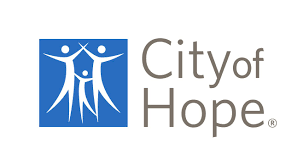- About Us
- Advertise / Support
- Editorial Board
- Contact Us
- CancerNetwork.com
- TargetedOnc.com
- OncLive.com
- OncNursingNews.com
- Terms & Conditions
- Privacy
- Do Not Sell My Information
- Washington My Health My Data
© 2025 MJH Life Sciences™ and CURE - Oncology & Cancer News for Patients & Caregivers. All rights reserved.
Supportive Care Matters ‘The Minute You Get Diagnosed’ With Cancer

A nationally-published, award-winning journalist, Alex Biese joined the CURE team as an assistant managing editor in April 2023. Prior to that, Alex's work was published in outlets including the Chicago Sun-Times, MTV.com, USA TODAY and the Press of Atlantic City. Alex is a member of NLGJA: The Association of LGBTQ+ Journalists, and also performs at the Jersey Shore with the acoustic jam band Somewhat Relative.
Experts from City of Hope explain the importance of symptom management and care planning during cancer.
Supportive care is a crucial component in a patient’s cancer experience, as multiple experts from City of Hope in Duarte, California explained.
“Supportive care is really an integral part of cancer care these days,” Dr. William Dale, chair in geriatric oncology at City of Hope, a professor in its Department of Supportive Care Medicine and director of its Center for Cancer and Aging, said in an interview with CURE®.
Dale described supportive care as “a complementary, but I'd say integrated, approach to care. … The key elements are expertise in symptom management and psychosocial care for patients. It depends on an interdisciplinary team — so, team members from different disciplines, social work, palliative medicine, psychiatry, for example. It's across the disease continuum.”
“The moment that a patient or a family member hear those words, ‘You have cancer,’ that's overwhelming, despite the fact that we have wonderful treatments now, we have much longer survival, or we have millions of cancer survivors,” said Betty Ferrell, director and professor of the Division of Nursing Research and Education at City of Hope.There's a tendency, Ferrell said, “for even patients and families to immediately focus only on the tumor, and to not be strong advocates for themselves in terms of expecting all the other quality-of-life concerns. We want patients and families, the public, to understand that quality and quality of life is important.”
Supportive Care Is Not Hospice
People often mistake supportive care for end-of-life care, Dale noted. But, it has a place in every stage of cancer care.
“The minute you get diagnosed, there are symptoms to manage and goals to define,” he said. “And then it usually involves more than the patient. So usually, there's a patient and others in their lives, families and other loved ones are involved. And we tend to think of that almost as the unit as much as the patient alone.”
Supportive care can be synonymous with palliative care, said Dr. Finly Zachariah, associate clinical professor in the Department of Supportive Care Medicine at City of Hope, noting that hospice care is one type of care that falls under the umbrella term of supportive care.
“Palliative care is more specialized medical care, and so it's focused on relieving the symptoms and stress of a serious illness, [it’s] appropriate at any age or any stage [of disease] and can actually be done alongside curative therapies. The goal is to improve quality of life — keeping not just the patient in mind, but also the family as well.
“That's slightly different from hospice, for example. All of those same concepts apply in hospice, except [hospice is] for when somebody is approaching the end of life, and they either have a lifespan of six months or less, and that's with current therapies, or the patient chooses to forego life-prolonging therapies and their prognosis becomes six months or less. That's where hospice then becomes appropriate.”
Create a Supportive Care Plan
Supportive care involves the establishment of a care plan, which Dale stressed the importance of, particularly for older patients.
“Many older patients, if you ask them, ‘Would you rather live longer, or would you rather be independent?’ they'll say, ‘I'd rather be independent, even if I have to leave live a little less long.’” he said. “So, their goals for their therapy aren't necessarily simply to live longer. It's to live better. That holds for everybody, but for younger patients, living longer becomes a higher priority, right?
“So, establishing this supportive care is the one [area] that really dives into [asking], ‘How are we going to tailor your treatment to what your goals are?’ …. People need to get this holistic approach to care, and it's easy to miss that in all of the testing and treatments and therapies that are done for cancer care. It can be easy to not identify that pain, nausea, fatigue, all the side effects that people are experiencing that should be addressed.”
Research Backs Supportive Care, Disparities Persist
Dale has been among the researchers examining the benefits of supportive care. His team found that a geriatric assessment-drive intervention — including recommendations from specialists such as an oncologist, nurse practitioner, social worker, physical or occupational therapist, nutritionist and pharmacist — resulted in a 10% reduction of grade 3 or higher chemotherapy-related side effects.
“We want the best than oncology care can provide,” said Ferrell. “But, in the process, we [also] want to support the patient and the family. We want to relieve your symptoms. We don't want you to be living in pain. We want to provide you with good psychosocial support and spiritual support. Patients and families should expect both: They should expect that we are concerned about the quantity how long they live, but very much we should be providing care that respects the quality of life.”One of the main potential driving factors for disparities in access to and utilization of supportive care is geography. Findings from JCO Oncology Practice “identified differences in both supportive care receipt and treatment satisfaction on the basis of residential location.”
“Telehealth has been a boon for those of us doing psychosocial care,” Dale said. “Because we can do a session on depression and anxiety largely online in a way that we can address [those issues]. But that's still a disparity. It would still be better, if you're in a lot of pain [to be seen in person]. I like to have them come see me if they're having a lot of pain and we're having to adjust their pain medicines.”
“Especially if it gets beyond a certain level that everyone can write a certain level of pain medications [for], but gets to very, very high levels, that really requires an expert to be able to manage it alongside the oncology team,” Zachariah said. “And so, I think one of the scary things for me is if you have patients who are in, say, outlying communities that don't have access to palliative care, we're really causing these patients to suffer if we don't allow for appropriate access to palliative care.”
A study of unmet supportive care needs published in JAMA Network Open found that “Black race, Hispanic ethnicity, greater number of years after diagnosis, depression, poor physical function and low health-related quality of life scores were associated with greater unmet needs,” researchers noted. “Compared with patients without unmet needs, those who reported having unmet needs had a significantly higher risk of emergency department visits and hospitalizations.”
Research published in the Journal of Pain and Symptom Management showed that “minority patients with advanced lung cancer are more likely to have higher baseline and persistent supportive care needs relatives to non-minority patients.”
“In the same way that underserved populations often don't get the best medical treatment, underserved communities also often don't get access to the best supportive care,” Ferrell said. “And so, there's a great deal of evidence that says that people who don't speak English or people who come from minority groups, or LGBTQ patients and partners, don't receive the same level of psychosocial support. And so, we, in the field of palliative care, must do our part. We have to ensure that patients are not only getting more equitable care for their cancer, but they're also receiving supportive and palliative care services for all of their unmet needs.”
For more news on cancer updates, research and education, don’t forget to subscribe to CURE®’s newsletters here.
Related Content:




